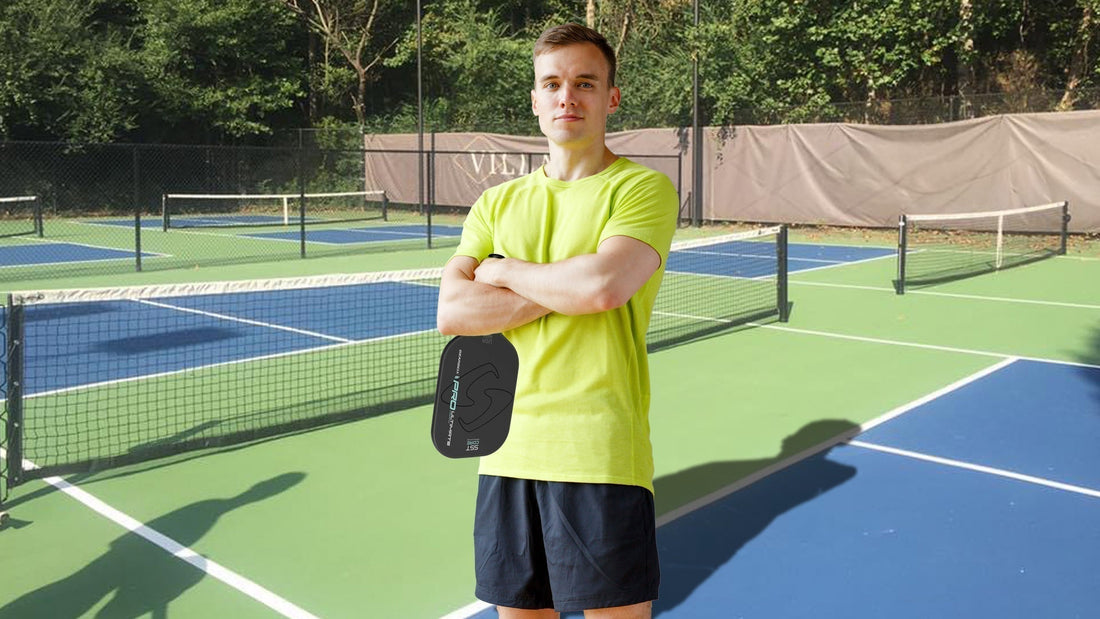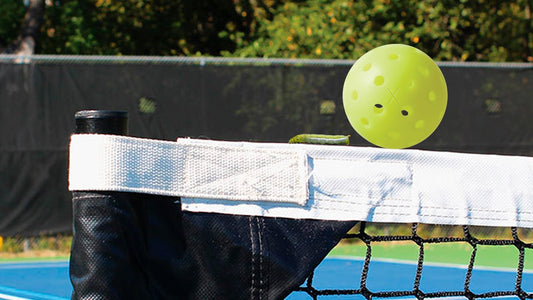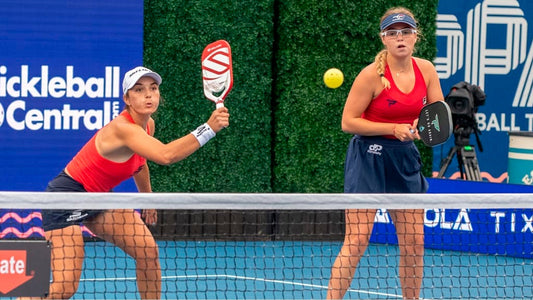
Clothing Colors Not Allowed When Playing Pickleball
Share
“Look good, play good—but make sure your colors don’t break the rules.” – Unknown
Pickleball is a sport of skill, movement, and strategy, but did you know that the color of your clothing can also impact your play? In some tournaments, certain clothing colors are restricted to ensure visibility and fairness. If you’re playing recreationally, this might not matter, but for those entering competitive matches, understanding which colors are not allowed can help you avoid penalties or forced wardrobe changes.
Why Are Some Clothing Colors Banned?
The primary reason for clothing color restrictions in pickleball is ball visibility. Since pickleballs are typically yellow, neon green, or orange, wearing apparel that closely matches the ball can cause confusion for opponents, referees, and spectators. The rule is designed to keep play fair by making the ball easier to track.
Key Reasons for Color Restrictions:
- Prevents Camouflage. Players wearing colors similar to the ball may create an unfair advantage, as it makes it harder for opponents to track the ball in motion.
- Ensures Fair Play. Standardized color rules help keep matches consistent and eliminate visual distractions.
- Enhances Spectator Experience. Clear contrast between players and the ball improves visibility for in-person spectators and televised matches.
Colors That May Be Restricted in Pickleball
While USA Pickleball does not universally ban specific clothing colors, tournament directors have the discretion to enforce clothing color restrictions based on the ball used in play.
Commonly Restricted Colors Based on Ball Used
- Yellow or Neon Green. The most commonly used pickleball colors in tournaments. Clothing in similar shades is often restricted.
- Orange. If a tournament uses orange balls, bright orange apparel might be prohibited.
- White. If a tournament uses white pickleballs (less common), white clothing could be restricted to maintain visibility.
Tournament Rule Example (USA Pickleball)
- Rule 2.G.1 in the USA Pickleball Rulebook states that tournament directors have the authority to prohibit players from wearing clothing that approximates the color of the ball.
- Players may be required to change outfits if their clothing is deemed too similar to the ball in use.
To avoid problems, always check the tournament’s specific clothing rules before arriving at the event.
What Should You Wear Instead?
If you’re unsure whether your clothing is allowed, opt for colors that contrast with the ball to ensure clarity for yourself, your opponents, and officials.
Choosing the right apparel isn’t just about avoiding penalties. It’s also about maximizing your visibility and reaction time. Studies show that contrast plays a significant role in visual processing speed, meaning that wearing colors that stand out can help you see the ball better and react more quickly.
If you want to avoid potential wardrobe issues, consider these color choices:
Best Colors to Wear in Pickleball Tournaments
- Black. A safe, neutral choice that contrasts well with most pickleball colors.
- Navy Blue. Dark blue shades stand out against yellow or green balls.
- Red and Maroon. Deep red tones are rarely confused with pickleball.
- Purple and Dark Green. Muted shades provide good contrast in most conditions.
- Gray and Pastels. Lighter neutral tones typically don’t match the ball color.
Avoid fluorescent yellow, neon green, or bright orange, especially in competitive play.
What Happens If You Wear a Restricted Color?
If you arrive at a sanctioned tournament wearing a color too similar to the ball, you may be asked to change your clothing before being allowed to compete. Tournament directors have full discretion over whether a player’s attire violates the rules.
It’s always best to plan ahead and avoid any last-minute surprises. A forced clothing change can be distracting and could affect your mental focus going into a match.
Some tournaments keep spare neutral-colored shirts on hand in case a player needs to change. However, you should never rely on this—having your own backup ensures you’re prepared.
Possible Consequences of Wearing a Restricted Color
- Asked to Change. If your outfit closely resembles the ball color, officials may request that you switch to a different shirt.
- Provided a Loaner Shirt. Some tournaments have neutral-colored shirts available for players who violate the clothing rule.
- Disqualification (in rare cases). If a player refuses to change their outfit after being warned, they may not be allowed to play.
Tips for Choosing Tournament-Approved Clothing
When preparing for a tournament, choosing the right outfit is just as important as bringing the right paddle. The last thing you want is to be caught off guard on match day.
To ensure your clothing is tournament-ready, follow these guidelines:
- Review Tournament Guidelines. Every tournament may have slightly different clothing rules, so always check the regulations before selecting your attire.
- Choose Contrasting Colors. Opt for colors that stand out against the ball to prevent any potential issues.
- Bring Extra Clothing. Have a backup outfit in a different color in case your first choice is flagged as too similar.
- Avoid Reflective Materials. Some tournaments prohibit overly shiny or reflective clothing, as it can distract other players.
- Plan for Weather Conditions. If playing outdoors, bring light, breathable fabrics for hot weather and layer up for cold conditions.
It’s always better to err on the side of caution when choosing your clothing for competitive play. Sticking to dark or neutral tones will ensure you stay compliant with the rules while looking professional on the court.
Game Point
While pickleball is known for its relaxed and fun environment, clothing color restrictions are an important part of tournament play. These rules exist to maintain fair competition and ensure that all players can track the ball without visual distractions.
If you’re gearing up for a tournament, double-check the event’s clothing guidelines, choose contrasting colors, and always have a backup outfit just in case. That way, you can focus on what truly matters—playing your best game.
See you on the courts!



